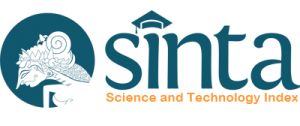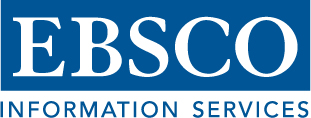Pengembangan Model Pembelajaran Kooperatif Tipe STAD Berbasis Media Sosial
Abstract
Ide tulisan ini adalah dimulai dari permasalahan pembelajaran di kelas yang masih terlihat hanya satu arah melalui metode ceramah, tanya jawab, dan diskusi dalam kelompok. Sementara generasi saat ini adalah generasi heutagogy di mana generasi ini telah diperhadapkan pada suatu keadaan yang berubah dengan cepat karena informasi teknologi yang sangat maju dalam hitungan menitnya. Tujuan dan target yang ingin dicapai adalah mewujudkan suatu pembelajaran yang berbasis media sosial yaitu suatu model pembelajaran yang memenuhi kebutuhan mahasiswa untuk terlibat aktif dalam pembelajaran. Oleh karena itu, penulis mengembangkan model pembelajaran kooperatif STAD berbasis media sosial pada mata kuliah Teologi dan Informasi Teknologi untuk meningkatkan keterampilan kolaboratif mahasiswa. Metode yang digunakan adalah metode pengembangan model (Research and Development) dengan lima langkah pembelajaran kooperatif STAD berbasis media sosial dengan dampak instruksional dan dampak pengiring di dalam modelnya. Luaran yang diperoleh adalah sebuah model pembelajaran yang dapat meningkatkan keterlibatan dan keterampilan mahasiswa secara kolaboratif dan holistik melalui penggunaan media sosial.
The idea of this writing is to begin with the problem of learning in the classroom that is still seen only in one direction through the lecture method, question and answer, and discussion in groups. While the current generation is a heutagogy generation where this generation has been confronted with a situation that is changing rapidly due to highly advanced technological information in minutes. The goals and targets to be achieved are realizing a social media-based learning that is a learning model that meets the needs of students to be actively involved in learning. Therefore, the authors developed STAD-based social media cooperative learning models in the Theology and Information Technology courses to enhance students’ collaborative skills. The method used is a model development method (Research and Development) with five steps of STAD-based social media cooperative learning with instructional impact and accompanying impact in the model. The results obtained are a learning model that can increase student involvement and skills collaboratively and holistically through the use of social media.
Keywords
Full Text:
PDF (Indonesian)References
Adam, A., & H. Mowers. “YouTube comes to the classroom.” School Library Journal 53, no. 1 (2007): 20–22.
Al-Rahmi, W., M. S. Othman, L. M. Yusuf. “The Role of Social Media for Collaborative Learning to Improve Academic Performance of Students and Researchers in Malaysian Higher Education.” The International Review of Research in Open and Distributed Learning 16, no. 4 (2015). http://www.irrodl.org/index.php/irrodl/article/view/2326
Balakrishnan, V., Gan Chin Lay. “Students’ Learning Styles and Their Effects on the Use of Social Media Technology for Learning.” Telematics and Informatics 33, no. 3 (2016): 808-821. http://dx.doi.org/10.1016/j.tele.2015.12.004
Blaschke, L. M. “Heutagogy and lifelong learning: A review of heutagogical practice and self-determined learning.” The International Review of Research in Open and Distributed Learning 13, no. 1 (2012): 56–71.
Burke, S. C., S. L. Snyder. “YouTube: An Innovative Learning Resource for College Health Education Courses.” International Electronic Journal of Health Education 11 (2008): 39–46.
Chen, B., T. Bryer. “Investigating instructional strategies for using social media in formal and informal learning.” The International Review of Research in Open and Distributed Learning 13, no. 1 (2012): 87–104.
Cheston, C. C., Tabor E. Flickinger, Margaret S. Chisolm. “Social Media Use in Medical Education: A Systematic Review : Academic Medicine.” Academic Medicine 88, no. 6 (2013): 893–901. https://doi.org/10.1097/ACM.0b013e31828ffc23
Danoebroto, S. W. “Teori Belajar Kontruktivis Piaget Dan Vygotsky.” Indonesian Digital Journal of Mathematics and Education 2, no. 3 (2015): 191–198.
Deci, E. L., R. Koestner, R. M. Ryan. “A meta-analytic review of experiments examining the effects of extrinsic rewards on intrinsic motivation.” Psychological Bulletin 125 (1999): 627–668.
Eberle, J. “Heutagogy: What your mother didn’t tell you about pedagogy and the conceptual age.” In Proceedings from the 8th Annual European Conference on e-Learning, October 29-30, 2009. Bary, Italia.
Elliot, S. Educational psychology: Effective teaching, effective learning 3rd Edition. Boston: McGraw-Hill Higher Education, 2000.
Esminarto, Sukowati, Anam, K. “Implementasi Model STAD dalam Meningkatkan Hasil Belajar Siswa.” BRILIANT: Jurnal Riset dan Konseptual 1 (November 2016): 16–23.
Firdausnetpreneur. “Inilah Data Pengguna Internet di Indonesia 2018, 49% Penggila Medsos.” Diakses 27 Juli 2018. https://firdausnetpreneur.com/inilah-data-pengguna-internet-di-indonesia-2018-49-penggila-medsos/
Hamid, S., J. Waycott, S. Kurnia, S. Chang. “Understanding students’ perceptions of the benefits of online social networking use for teaching and learning.” Internet and Higher Education 26 (2015): 1–9.
Hamzah, A. “Pola Penggunaan Situs Jejaring Sosial Sebagai Media Pembelajaran Untuk Mahasiswa.“ Jurnal Teknoin 21, no. 4 (2016). http://www.jurnal.uii.ac.id/jurnal-teknoin/article/view/4202
Isjoni. Cooperative Learning (Efektivitas Pembelajaran Kelompok). Yogyakarta: Pustaka Pelajar, 2009.
Ismail. Media Pembelajaran (Model-model Pembelajaran). Jakarta: Peningkatan Mutu SLTP, 2003.
Joyce, B., Marsha Weil, & Emily Calhoun. Models of Teaching Model-model Pengajaran. Yogyakarta: Pustaka Pelajar., 2011.
K., Roestiyah N. Strategi Belajar Mengajar. Jakarta: Rineka Cipta, 2001.
Kemp, S. “Digital in 2018: World’s internet users pass the 4 billion mark - We Are Social.” Diakses 27 Juli 2018. https://wearesocial.com/blog/2018/01/global-digital-report-2018
Kourieos, S. “Video-Mediated Microteaching – A Stimulus for Reflection and Teacher Growth.” Australian Journal of Teacher Education 41, no. 1 (2016). https://doi.org/10.14221/ajte.2016v41n1.4
Niemiec, C. P., R. M. Ryan. “Autonomy, competence, and relatedness in the classroom: Applying self-determination theory to educational practice.” School Field 7, no. 2 (2009): 133–144. https://doi.org/10.1177/1477878509104318
Pertiwi, W. K. “Riset Ungkap Pola Pemakaian Medsos Orang Indonesia.” Diakses 27 Juli 2018. https://tekno.kompas.com/read/2018/03/01/10340027/riset-ungkap-pola-pemakaian-medsos-orang-indonesia
Rahayu, E. S., Supriyono. “Penerapan Model Pembelajaran Kooperatif Tipe STAD Untuk Meningkatkan Hasil Belajar Kelas I SDN Ujung X Surabaya.” Jurnal Penelitian Pendidikan Guru Sekolah Dasar 2, no. 2 (2014): 1–10.
Romero, O. C. “Social Media as learning tool in higher education: the case of Mexico and South Korea.” Sinéctica, Revista Electrónica de Educación 44 (2015): 1–15.
Rusman. Model-model Pembelajaran Mengembangkan Profesionalisme Guru. Jakarta: RajaGrafindo Persada, 2011.
Sobaih, A. E. E., M. A. Moustafa, P. Ghandforoush, M. Khan. “To use or not to use? Social media in higher education in developing countries.” Computers in Human Behavior 58 (2016): 296–305. https://doi.org/10.1016/j.chb.2016.01.002
Suprijono, A. Cooperative Learning (Teori dan Aplikasi Paikem). Yogyakarta: Pustaka Pelaja, 2009.
Trianto. Mendesain Model Pembelajaran Inovatif-Progresif: Konsep, Landasan, dan Implementasinya Pada Kurikulum Tingkat Satuan Pendidikan (KTSP). Surabaya: Kencana Prenada Media Group, 2009.
Vygotsky, L. S. Mind in society: The development of higher psychological processes. Cambridge: Harvard University Press, 1978.
Weismann, I. T. J., Ismail Tolla, & Abdullah Sinring. “The Development of Multicultural Based Cooperative Learning Model to Enhance the Emotional Quotient of the Students of Jaffray Theology Academy of Makassar.” The Social Sciences 13, no. 1 (2018): 1–6. https://doi.org/10.3923/sscience.2018.1.6
DOI: http://dx.doi.org/10.25278/jj71.v16i2.302
viewed = 0 times


















